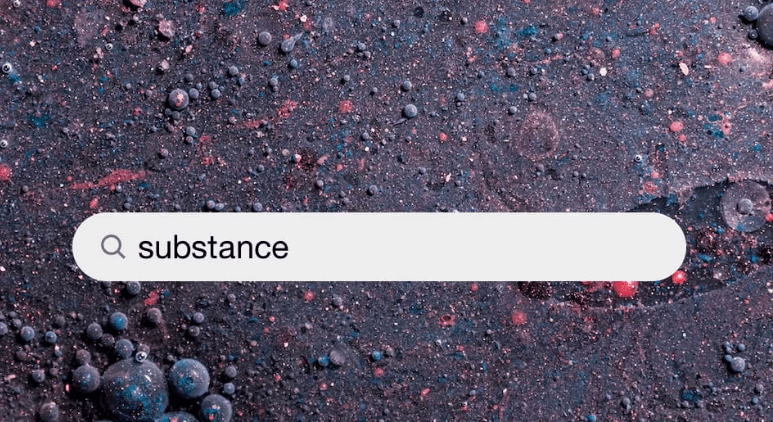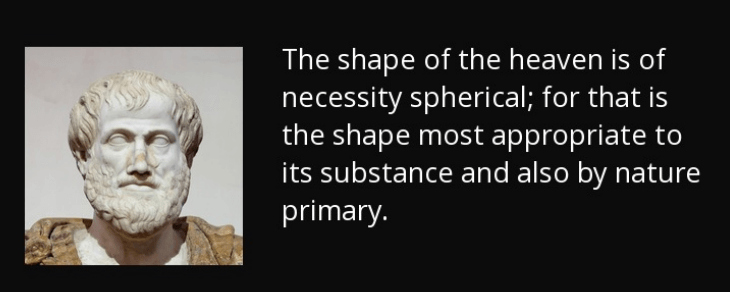Substance DefinitionIntroductionMany of the ideas that philosophers examine have their roots in a common language, or at least a language that is not philosophical. Perception, expertise, causality, and the mind are examples of this. "Although it is not the main application, "illegal substances" is closer to one of the philosophical applications. When philosophers talk about "substance," a common idea comes into play. When compared to properties or events, this is the concept of an object or thing, as we shall see. The term "substance" is never used to describe these "individual substances" outside of philosophy. There are two distinct approaches to describing the philosophical idea of substance; the first is more universal. 
Substance DefinitionThe Latin phrase for substantial, which means "something that stands under or grounds things," was translated from the Greek word ousia, which means "being," to produce the etymological term "substance." As a result, in the broadest sense, substances in a certain philosophical system are those things that, according to that system, make up the fundamental or underlying elements of reality. The reality of substances in this sense of the word "substance" is acknowledged by all realist philosophical schools. Perhaps the only theories that do not treat ontology as a matter of convention are those that adhere to logical positivism or pragmatism. Such theories claim that there are no facts about what constitutes an ontologically fundamental idea and that nothing is objectively substantial. The concept is employed again in a more targeted way. Certain philosophical theories recognize substances as a certain type of fundamental entity, while others do not. In this sense, Hume's impressions and ideas are not substances, even though they serve as the cornerstones of his world and define what constitutes "being" in it. This usage asserts that it is a living question of whether the basic entities are substances or something distinct, such as events or qualities placed at spacetimes. The idea of an individual entity or object, which contrasts primarily with attributes and events, is the source of this conception of substance. The issue is how we should interpret the idea of an object and if, with the right interpretation, it still qualifies as a fundamental idea or requires further clarification whether an object can be seen as nothing more than a collection of attributes or as a series of events, for example. Fundamental Concepts
Aristotle's Categories, where he distinguishes between particular things and the numerous characteristics they can possess, provide the first theoretical articulation of the concept of an object. He provides examples of the various kinds. Each [individual phrase] denotes a material, quantity, qualification, relation, location, time, occupation, having, doing, or being impacted. For a general idea, consider the following: ideas of substance are man and horse; ideas of quantity are four and five feet; ideas of qualification are white and grammatical; ideas of a relative are double, half, and larger; ideas of where are the Lyceum and the market; ideas of when are yesterday and last year; ideas of being in a position are lying and sitting; ideas of doing are cutting and burning; and ideas of being affected are being cut and burned. Individual substances can change their characteristics while still existing since they are the objects of the characteristics of so many other categories. Aristotle significantly distinguished between types of particular objects and individual objects. Thus, a discussion of substance can be used to talk about people, or it can be used to talk about universal concepts that identify different categories of people. 'Primary substance' and secondary substance' are phrases used in the Categories to indicate this differentiation. Dog or Doghood is the secondary or substantial substance, whereas Fido the dog is the fundamental substance-a living being. This distinction's several branches generate various problems. If one is interested in material types, an obvious question that will come up is, "What constitutes a thing of that kind (for instance, what constitutes a dog)?" It is a query about the fundamental nature of significant kinds. However, suppose one is more interested in people. In that case, the parallel query is, "What makes something that particular individual of a given kind (for instance, what causes a dog to be and remain Fido)?" It is the problem of changing identities and unique essences. Aristotle was mostly if not entirely, preoccupied with the first kind of problem. This connection between substance and sorts permeates the term's application, which is likely more scientific than philosophical, especially in chemistry. According to this idea, different sorts of materials are different substances. They are neither distinct objects nor distinct object types. This usage includes ectoplasm, copper, granite, water, and hydrogen. The word "substance" has a connotation expressed in the notion of substantial and denotes toughness or even permanence. Events or Hume's thoughts or feelings are never meaningful in this sense since they are fleeting. One can imagine that atoms, the building blocks of matter, gods, or abstract objects like Platonic Forms or numbers are so substantial as to be everlasting or indestructible that they endure at least as long as the world, and possibly even longer in the case of gods or God or abstract objects. In conclusion, the philosophical concept of a substance comprises at least six overlapping concepts, and they can be classified as:
We'll see in more detail below how the Kantian tradition adds a seventh indication of substance:
Different philosophers prioritize various qualities from this list for reasons related to their overall system. It is conceivable to claim that an account is intuitively more appealing the more criteria it can accommodate, and the Aristotelian tradition comes closest to accomplishing this. The Philosophical Debate on Substance in HistoryIt would be cumbersome to explore the entire history of the concept of substance, which nearly all significant philosophers have discussed. The selection process will focus on philosophers who have garnered the most interest within the broadly analytic tradition. We'll start by examining how the idea evolved in the ancient world and reached its zenith in Aristotle's writings. His account dominated debate through the Middle Ages and into the early Modern Era. We will examine various empiricist and rationalist approaches to the idea. Since so many discussions today are motivated by an Aristotle-Locke connection, Locke's contribution will be examined in particular detail (as we shall see in section 3). Aristotle Before SubstanceIn reality, many pre-Socratic philosophers strongly focused on criteria (6) above, similar to the concept of substance previously given to chemistry. In other words, they believed that the universe's being was made up of something or things (thus why they were pursuing substance in meaning (1). Anaximenes believed that everything was a type of air, while Thales believed that everything was essentially water. The "stuff" in question was ambiguous in Anaximander's view so that it may transform into the many definite substances, including water, air, earth, and fire. On the other hand, atomists like Democritus believed that the universe comprises fixed, specific objects called "atoms." Atoms are objects in the conventional sense but are not the same as our everyday items like dogs, cats, tables, and chairs. Despite being the focus of prediction, they maintain their inherent characteristics. Therefore, classical atoms are strong examples of (1) and (2) but somewhat outlier examples of (3) and (5). These attempts by materialists to explain everything in terms of the substance from which it was created were rejected by Plato. Plato claimed that the intelligible Forms, which material objects tried to imitate, were the guiding principles. These Forms are not substances in the sense of being the materials, people, or types of people from which all else is made. Instead, they serve as the guiding principles that give everything else shape and direction. The rest would be a confusing mess by itself. In a peculiar way, the Forms satisfy criteria (1), ontological basicness, since they do not, strictly speaking, constitute objects. They successfully meet (2)-durability-because they are unchanging throughout time. They perform poorly on (3) and (4) because they are not, in the intended senses, the subjects of prediction or, in any sense, the subjects of change. They struggle with (5) because, despite being individuals of a highly peculiar kind, they are not individuals in the conventional sense. (According to Fine 1993, Aristotle's fundamental criticism of Plato's Forms was that they muddle the concepts of the universal and the particular.) They fail because they are not things in any sense (6). But Plato's failure to uphold these criteria does not amount to carelessness. It displays his stress on criterion (1) and his unique perspective on the fundamental nature of forms. They perform poorly on (3) and (4) because they are not, in the intended senses, the subjects of prediction or, in any sense, the subjects of change. They struggle with (5) because, despite being individuals of a highly peculiar kind, they are not individuals in the conventional sense. (According to Fine 1993, Aristotle's fundamental criticism of Plato's Forms was that they muddle the concepts of the universal and the particular.) They fail because they are not things in any sense (6). But Plato's failure to uphold these criteria does not amount to carelessness. It displays his stress on criterion (1) and his unique perspective on the fundamental nature of forms. How Items in Different Categories Can Be Recognized from SubstancesIn contrast, properties are characteristics of objects (i.e., of specific substances); substances do not share a similar dependence on attributes for their existence. But it's more complicated to get the concept through. Although neither substances nor properties could exist without an object being a property, the reliance seems reciprocal. This issue can be resolved by carefully stating the argument and clarifying that we are not discussing substances or qualities in general but rather specific occurrences or situations of quality and the objects to which they belong. While the specific substance of which a given property is a part can exist and might have done so without that particular property instance, the specific substance cannot exist and could not have done so without it. As a result, an instance of a certain color cannot and could not have existed without the item for which it is the color. However, the object can still exist without the instance of color because it can change color while remaining the same object or because it might have had a different color at first.
Next TopicVirus Definition Biology
|
 For Videos Join Our Youtube Channel: Join Now
For Videos Join Our Youtube Channel: Join Now
Feedback
- Send your Feedback to [email protected]
Help Others, Please Share










